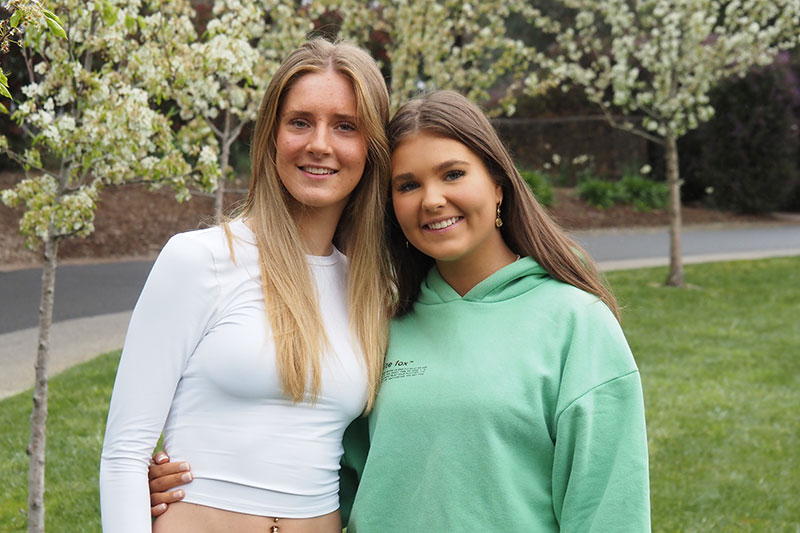Key facts
- Scoliosis affects roughly one percent of the population
- 80 per cent of scoliosis cases don’t have a cause
- Epworth Richmond is one of the largest private hospitals caring for children with scoliosis
She was trying on clothes in the shops and her back and posture didn’t look quite right.
An Epworth spinal surgeon is concerned cases of curvature of the spine known as scoliosis may have been missed in teenagers throughout the pandemic.
Associate Professor Yi Yang said scoliosis is normally picked up by family or friends.
“Because it doesn’t often cause pain in the early stages, most of these cases are noticed by parents or friends who notice the deformity,” A/Prof Yang said.
“Given teenagers were going out less due to the pandemic, the early signs of scoliosis may have been missed. Without treatment, scoliosis can progress quickly, which can restrict the lungs and heart and make surgery more complex as well”.
A/Prof Yang said some parents may have delayed seeking treatment for their children during the pandemic.
“Some people had put it off. I have no doubt there are some parents who would think it wasn’t that bad or were concerned about keeping appointments at the height of the pandemic so didn’t seek help.”
What causes scoliosis?
The most common type of scoliosis is a condition known as adolescent idiopathic scoliosis.
“It largely presents when they are teenagers, and idiopathic means we actually don’t have a real cause for the scoliosis,” A/Prof Yang said.
“Scoliosis that we don’t find a cause for makes up about 80 percent of all scoliosis cases.”
It is estimated about one percent of Australia’s 26-million population has scoliosis. Only a very small percentage of scoliosis patients will need surgery.
Epworth Richmond is one of the largest private hospitals taking care of scoliosis patients, with a specialist team of doctors, surgeons, nurses and allied health staff working together to care for children with scoliosis.
Unique scoliosis bond
Year 10 Ballarat school friends Ella and Scarlett (pictured) share a unique bond.
They’ve gone to the same school since year seven. They are in the same classes. They’re good friends, and they share the same spinal surgeon – Associate Professor Yi Yang.
Ella’s mum Mel noticed something wasn’t right after Ella had a growth spurt during 2020.
“She was trying on clothes in the shops and her back and posture didn’t look quite right,” Mel said.
A visit to the GP led to scans being done, and scoliosis was diagnosed.
Mel was shocked and concerned.
“I was emotional looking at Ella's scans, as the severity of the curve was quite visible and I knew what possibly may lie ahead for Ella" she said.
Scoliosis mainly affects teenage girls, and often runs in families. Although many aren’t aware they have the condition as it doesn’t always cause pain in the early stages.
However, Ella experienced discomfort ahead of her surgery.
“It was like I had overdone it after a busy day and had an aching pain in my ribs, but it was manageable" Ella said.
Mel and Ella knew what to expect once she was diagnosed. Ella’s good friend Scarlett had undergone surgery to correct her Scoliosis 12 months before Ella was operated on.
Scarlett’s scoliosis was spotted by her personal trainer at the gym.
“My trainer was teaching me how to use some equipment and she noticed my shoulders were uneven,” Scarlett said.
The trainer advised Scarlett to see her GP.
Her condition worsened in a matter of months and her breathing was impacted by the time she had surgery.
“I was shocked at how fast it happened. It was the blink of an eye. It wasn’t as easy to breathe as my lungs were getting squashed.”
In a strange coincidence, Scarlett and Ella had the same degree of spinal curvature before surgery.
Recovering from scoliosis surgery
Paediatric Nurse Unit Manager Meredith Elliott said the thought of spinal surgery can be daunting.
“It is one of the biggest operations you can do on a child,” Ms Elliott said.
“Children with scoliosis tend to go from being normally healthy, fit adolescents to facing a (significant) operation in a short space of time.”
Over the last few years, Epworth has developed a program to help scoliosis patients recover quickly from surgery.
“20 years ago, scoliosis patients were hospitalised for many weeks after surgery. Ten years ago, it was down to one-two weeks.
“Thanks to an improved care program after their operation, patients can often have surgery and be discharged home a few days later.
Scoliosis is more common in girls and is usually noticed from age 11 to 16 around the time of puberty and their growth spurt.
“We have a specialist team of nurses, allied health professionals and doctors specialising in scoliosis working together to take care of the patients after their surgery.”
“The average stay is about 3-5 days. Patients work intensively with the allied health team to undertake physiotherapy with the nursing staff too helping get them moving.”
“Our patients can be quite anxious initially, so we work closely with them and their parents to make sure they are comfortable.”
Meredith and Ben de Zoete, physiotherapist at Epworth, have been working together taking care of children who have had orthopaedic surgery for almost 20 years.
“It’s exceptionally specialist care – and work hard as a team to ensure our patients achieve their goals, she said.
The program also cares for a range of other patients including spinal trauma patients who have had surfing, diving or horse riding accidents.




